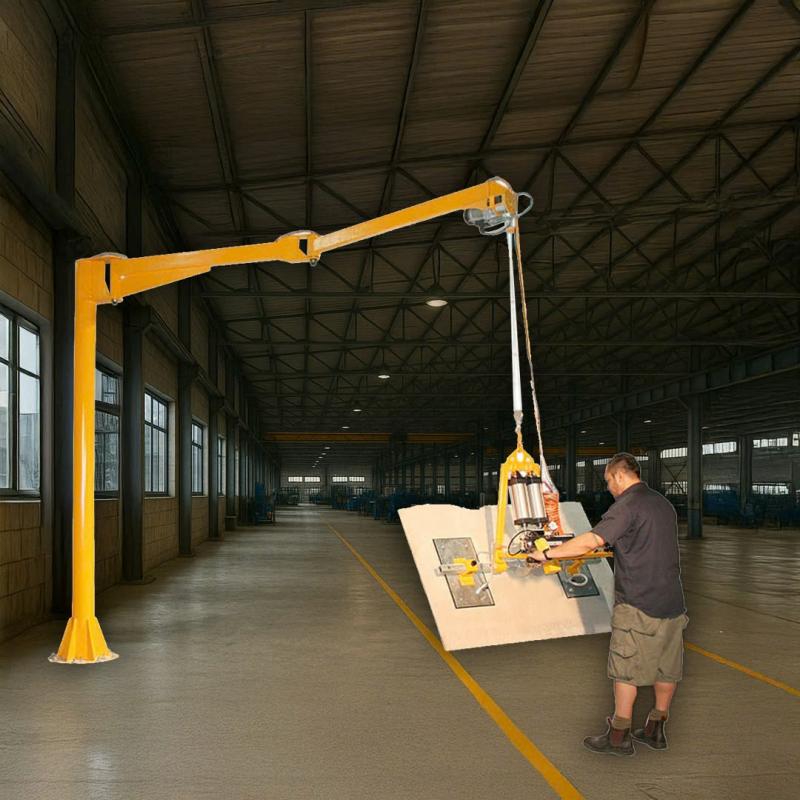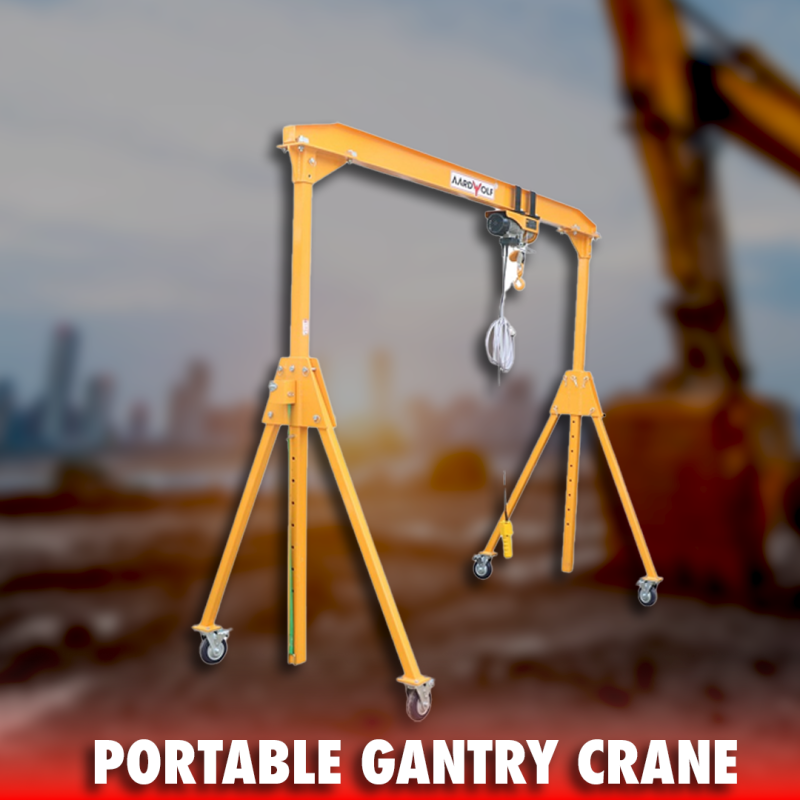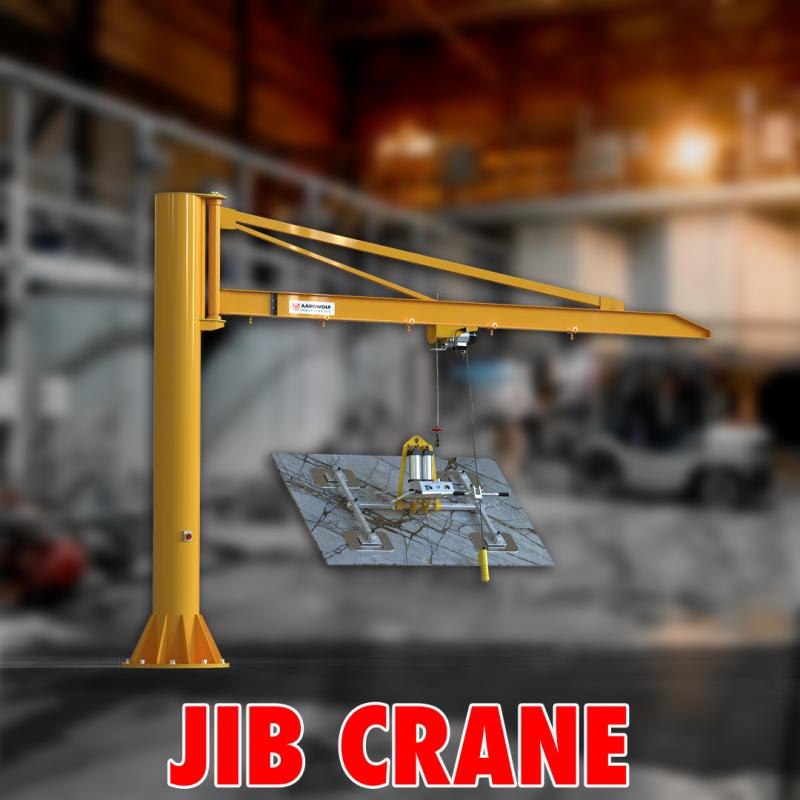



Whether you're using a freestanding jib crane, a wall-mounted jib crane, or an articulating jib crane, knowing how to operate jib cranes safely and effectively is essential. This comprehensive guide provides a detailed understanding of jib crane operation, including preparation, usage steps, safety precautions, and insights into advanced models to optimize your productivity.

Jib cranes are versatile lifting devices characterized by their horizontal jib or boom supporting a movable hoist. Jib cranes facilitate circular lifting coverage, enabling the handling of loads within a specific area. Common applications range from workshops and warehouses to industrial manufacturing settings.
Familiarizing yourself with various jib cranes helps in selecting the right model for your operational needs:
Freestanding Jib Crane: Mounted to the floor or foundation, providing 360-degree rotation, ideal for extensive floor areas or outdoor environments.
Wall Mounted Jib Crane: Installed on walls or vertical beams, offering around 180-degree rotation. It's perfect when floor space is limited.
Ceiling Mounted Jib Crane: Suspended from ceilings or overhead structures, optimizing floor space utilization, commonly used in assembly lines or workstation setups.
Articulating Jib Crane: Designed with pivoting arms, providing enhanced flexibility for navigating around obstructions.
Pillar Jib Crane: Fixed to pillars, similar to freestanding jib cranes, typically customized for vertical or constrained workspace operations.
For a detailed comparison and further insights, explore the Aardwolf Jib Cranes Comparison.
Effective operation begins with comprehensive preparation, ensuring safety and efficiency.
Only trained, authorized personnel should handle jib cranes. Operators must understand crane capacities, rigging techniques, and safety protocols to mitigate risks.
Performing thorough checks before each use is critical:
Inspect hoists, chains, hooks, cables, and trolleys for wear or damage.
Verify the integrity of bolts, nuts, and structural components.
Ensure all controls, switches, and limit stops function correctly.
Confirm the work area is clear of hazards or obstructions.
For detailed instructions on crane installation preparation, consult Jib Cranes Installation.

Understanding the correct procedures ensures safe and productive use of jib cranes. Follow these clear steps for reliable crane operation:
Verify the load weight; ensure it does not exceed your crane’s rated capacity.
Select appropriate lifting gear (slings, hooks, clamps) suitable for the load.
Secure the load evenly, ensuring stability and balance.
Rotate the jib arm manually or using powered rotation toward your load.
For wall-mounted jib cranes, confirm sufficient clearance around the pivot.
Use articulating jib cranes to navigate complex workspaces efficiently.
Gradually hoist the load slightly off the ground to confirm stability.
Avoid abrupt lifting motions or side-loading.
If instability is detected, lower and re-adjust the load before proceeding.
Smoothly push or pull the trolley along the jib boom.
Maintain a consistent, safe speed to avoid swinging.
Ensure load remains clear of personnel and equipment during transport.
Gently lower the load to its target location.
Ensure the load is secure and stable before releasing lifting gear.
Return the jib crane arm to its neutral, designated storage position.
Operating jib cranes safely requires strict adherence to safety protocols:
Never exceed rated load capacities.
Always ensure nobody is beneath the crane boom or load during operation.
Regularly check limit switches, emergency stops, and mechanical integrity.
Adhere strictly to scheduled maintenance routines.
Learn more about efficient installation and safety in Enhancing Efficiency with a Jib Crane.
Different jib crane models cater to distinct operational demands:
Freestanding Jib Cranes offer extensive operational flexibility across wide areas.
Wall Mounted Jib Cranes conserve space and facilitate ergonomic material handling.
Articulating Jib Cranes enhance maneuverability and reduce manual labor fatigue.
Ceiling Mounted Jib Cranes improve space utilization in densely equipped workplaces.
Discover comprehensive model insights through Exploring Jib Cranes Models.
For more specific applications, specialized jib crane models from trusted suppliers offer additional advantages:
Articulating Wall Mounted Jib Cranes provide precise, obstacle-avoiding movements.
Models such as Wall Mounted Jib Crane blend robust construction with compact design, perfect for constrained spaces.
Stay ahead by keeping track of advancements in jib crane technology at Future Trends of Jib Cranes.
Efficient jib crane operation is crucial for workplace productivity and safety. Understanding the types, proper operation methods, and safety measures enhances your ability to fully leverage jib crane capabilities. By utilizing best practices, operators can ensure workplace efficiency, equipment longevity, and safe material handling operations.
Embrace continual learning and operational improvements to fully realize the productivity benefits of jib cranes in your workplace.
References
1. How to operate a Jib Cranes safely
3. Over brace jib crane wall mounted
5. Is a Jib Crane a Gantry Crane
6. Articulated Jib Crane Wall Mounted
8. Manual Counterbalance Crane
10. Over Braced Jib Crane Column Mounted
Sign up to receive the latest info on new Aardwolf products, special offers and more.
By signing up you agree to receive emails from Aardwolf with news, special offers, promotions and other information. You can unsubscribe at any time.